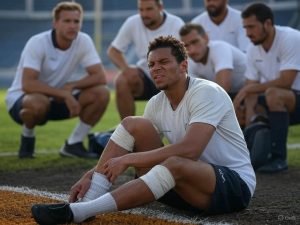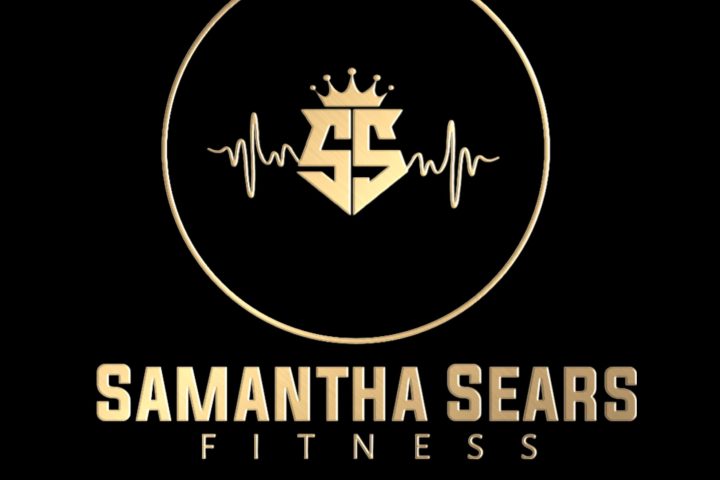
In today’s fast-paced world, we often pride ourselves on pushing through discomfort, treating pain as a badge of honor. The phrase “no pain, no gain” has become a mantra for athletes, professionals, and everyday individuals striving for success. Yet, this mindset can lead us to overlook critical signals our bodies send, blurring the line between being “hurt” and being “injured.” Listening to your body is not a sign of weakness but a profound act of self-awareness and care. This article explores the distinction between hurt and injured, examines how societal conditioning encourages us to ignore pain, and emphasizes the importance of stepping back to heed our body’s messages. Additionally, it delves into the role of yearly exams, blood work, proper nutrition, and exercise in preventing and managing injuries, offering a holistic approach to maintaining health and resilience.
The Difference Between Hurt and Injured
To navigate the complex landscape of physical sensations, it’s essential to first understand the difference between being hurt and being injured. These terms are often used interchangeably in casual conversation, but they carry distinct meanings that can guide our actions and decisions.
What Does “Hurt” Mean?
Being “hurt” typically refers to temporary discomfort or soreness that arises from exertion, overuse, or minor strain. This could manifest as muscle soreness after a workout, a slight ache from sitting too long, or a twinge from an awkward movement. Hurt is often a natural response to physical activity, especially when pushing your limits. For example, delayed onset muscle soreness (DOMS) is a common experience after starting a new exercise routine or increasing intensity. This type of discomfort usually resolves with rest, stretching, or light movement within a few days.
The key characteristic of being hurt is that it doesn’t typically interfere with daily function. You might feel stiff or tender, but you can still walk, work, or engage in moderate activity without significant risk. The body uses this sensation as feedback, signaling that it’s adapting to stress. Listening to this feedback allows you to adjust—perhaps by taking a rest day or modifying your workout—without derailing your progress.
What Does “Injured” Mean?
In contrast, being “injured” indicates a more serious issue, often involving damage to tissues such as muscles, tendons, ligaments, or bones. Injuries can result from acute trauma (e.g., a twisted ankle from a fall) or chronic overuse (e.g., tendonitis from repetitive motion). Unlike hurt, an injury often comes with sharper pain, swelling, limited range of motion, or instability. For instance, a torn ligament might cause a popping sound followed by inability to bear weight, while a stress fracture might present as persistent, localized pain that worsens with activity.
Injuries require more than rest; they often need medical intervention, rehabilitation, or time away from certain activities to heal properly. Ignoring an injury can lead to long-term consequences, such as chronic pain or permanent damage. The body’s signals here are louder and more urgent, demanding attention to prevent further harm.
Why the Confusion?
The line between hurt and injured can blur because both involve pain, and our perception of pain is subjective. Factors like adrenaline, determination, or denial can mask the severity of an issue. For example, a runner might push through a sore knee (hurt) only to discover later it’s a meniscus tear (injured). This confusion is compounded by cultural narratives that glorify endurance, making it hard to discern when to stop.
The Conditioning to Overlook Pain
From a young age, many of us are conditioned to ignore pain and keep going. This conditioning stems from various sources—sports culture, workplace expectations, and societal norms—that equate toughness with success.
Sports and the “No Pain, No Gain” Mentality
In athletic settings, coaches and peers often encourage players to push past discomfort. A football player might be told to “shake it off” after a hard tackle, while a dancer might be praised for performing through foot pain. This mindset builds resilience but can also desensitize individuals to their body’s warnings. Studies suggest that athletes who ignore early signs of injury are more likely to suffer severe setbacks, with research from the American Journal of Sports Medicine indicating that 60% of running injuries result from overuse exacerbated by ignoring initial discomfort.
Workplace Pressure
In professional environments, the hustle culture reinforces the idea that taking breaks is a luxury. Employees might work through back pain from poor ergonomics or headaches from stress, fearing that admitting weakness could jeopardize their standing. This stoicism can lead to burnout or chronic conditions, with the World Health Organization now recognizing burnout as an occupational phenomenon linked to prolonged stress.
Societal Norms of Toughness
Broader cultural narratives also play a role. Phrases like “grin and bear it” or “push through” are passed down through generations, framing pain as a test of character. Men, in particular, may feel pressure to suppress vulnerability due to traditional masculinity norms, while women might be conditioned to prioritize others’ needs over their own health. This collective mindset discourages listening to the body, often until the consequences become unavoidable.
The Cost of Ignoring Pain
This conditioning comes at a cost. Chronic pain affects over 20% of people worldwide, according to the International Association for the Study of Pain, with many cases linked to untreated minor issues that escalated. By overlooking pain, we risk turning a manageable hurt into a debilitating injury, prolonging recovery and diminishing quality of life.
The Power of Listening to Your Body
Despite these ingrained habits, there’s a growing recognition that listening to your body is a strength, not a flaw. It requires tuning into subtle cues and honoring them with appropriate action.
Recognizing the Signals
Your body communicates through a range of sensations—tightness, fatigue, sharp pain, or even emotional stress. Learning to differentiate these signals is key. For instance, a dull ache after lifting weights might suggest a need for rest, while a sudden, stabbing pain could indicate a strain. Mindfulness practices, such as body scans or journaling, can enhance this awareness, helping you identify patterns and respond proactively.
When to Step Back
Sometimes, the bravest choice is to pause. If a joint swells after a run or a muscle locks up during a workout, stepping back can prevent escalation. Rest doesn’t mean quitting—it means giving your body the chance to repair. Athletes like Serena Williams and Tom Brady have publicly credited strategic rest for their longevity, showing that top performers prioritize recovery.
Balancing Toughness and Self-Care
Being tough doesn’t mean ignoring your limits; it means respecting them to come back stronger. A boxer might train through sore muscles but will stop if a punch causes a sprain. This balance allows you to maintain discipline while protecting your health. It’s okay to be resilient, but it’s equally okay to listen when your body says, “Enough.”
The Importance of Preventive Health Measures
To support this listening process, proactive health practices can reduce the risk of injury and enhance overall well-being. Yearly exams, blood work, nutrition, and exercise form a foundation for combating injuries and maintaining resilience.
Yearly Exams: A Window into Your Health
Annual physical exams are a critical tool for catching issues early. A doctor can assess joint health, muscle function, and overall fitness, identifying risks before they become injuries. For example, a routine check might reveal early arthritis or vitamin deficiencies that could weaken bones. The U.S. Preventive Services Task Force recommends annual screenings for adults, tailored to age and risk factors, to monitor conditions like hypertension or diabetes that impact physical health.
Blood Work: Inside Insights
Blood tests provide a deeper look at your body’s internal state. They can detect inflammation markers (e.g., C-reactive protein), low iron levels, or hormonal imbalances that might contribute to fatigue or injury susceptibility. For instance, low vitamin D is linked to muscle weakness and fractures, a finding supported by the Journal of Clinical Endocrinology & Metabolism. Regular blood work, ideally every 6-12 months depending on health status, allows for timely interventions like supplements or dietary adjustments.
Eating for Injury Prevention
Nutrition plays a pivotal role in keeping your body resilient. Protein is essential for muscle repair—aim for 0.8-1.2 grams per kilogram of body weight daily, with sources like lean meats, beans, or tofu. Anti-inflammatory foods like berries, fatty fish, and leafy greens can reduce soreness, while calcium and vitamin D (from dairy or fortified foods) strengthen bones. Hydration is equally vital; even mild dehydration can stiffen muscles and joints, increasing injury risk. A balanced diet tailored to your activity level supports recovery and prevents the progression from hurt to injured.
Working Out Smart to Combat Injuries
Exercise strengthens the body but must be approached wisely. A mix of strength training, flexibility exercises (e.g., yoga), and cardiovascular activity builds a robust musculoskeletal system. The American College of Sports Medicine recommends at least 150 minutes of moderate aerobic activity weekly, plus two days of strength training. Proper form and gradual progression prevent overuse injuries, while warm-ups and cool-downs enhance blood flow and reduce stiffness. Cross-training—alternating activities like swimming and running—also minimizes repetitive strain, keeping you active longer.
Practical Steps to Start Listening
Transitioning from ignoring to listening requires intentional steps. Begin by tracking your symptoms—note when pain occurs, its intensity, and what alleviates it. Consult a healthcare provider for persistent issues, and don’t hesitate to seek a physical therapist for tailored advice. Incorporate rest days into your routine, and experiment with recovery techniques like foam rolling or massage. Over time, this practice builds a dialogue with your body, fostering trust and resilience.
Conclusion
Listening to your body is a lifelong skill that balances toughness with self-care. By understanding the difference between hurt and injured, we can break free from the conditioning that urges us to push past pain. Stepping back when needed, supported by yearly exams, blood work, smart eating, and strategic exercise, empowers us to prevent injuries and thrive. It’s not about avoiding effort but honoring the body’s wisdom to sustain it for the long haul. So, the next time you feel a twinge, pause—your body might be telling you something worth hearing.
